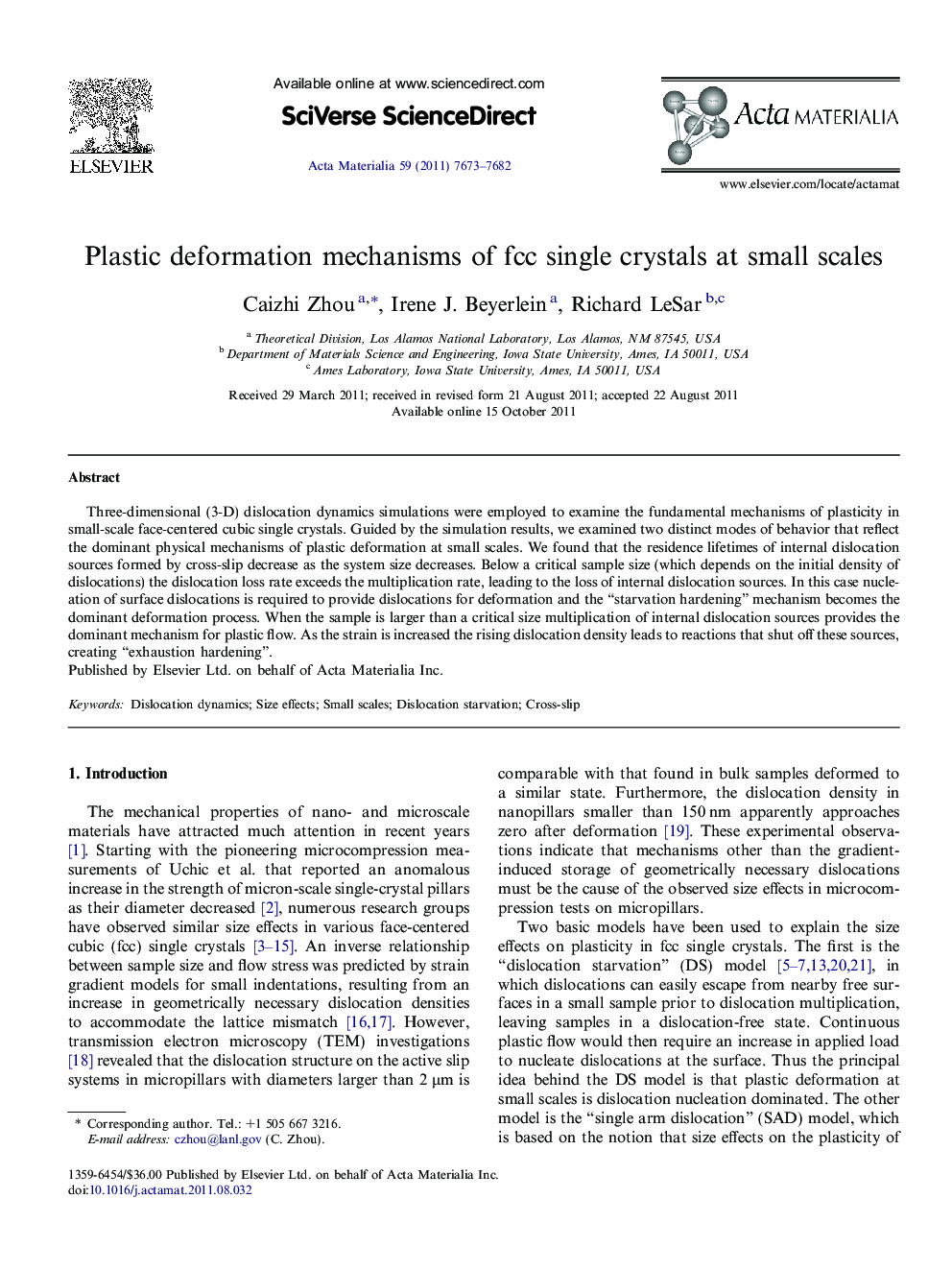| Article ID | Journal | Published Year | Pages | File Type |
|---|---|---|---|---|
| 10620366 | Acta Materialia | 2011 | 10 Pages |
Abstract
Three-dimensional (3-D) dislocation dynamics simulations were employed to examine the fundamental mechanisms of plasticity in small-scale face-centered cubic single crystals. Guided by the simulation results, we examined two distinct modes of behavior that reflect the dominant physical mechanisms of plastic deformation at small scales. We found that the residence lifetimes of internal dislocation sources formed by cross-slip decrease as the system size decreases. Below a critical sample size (which depends on the initial density of dislocations) the dislocation loss rate exceeds the multiplication rate, leading to the loss of internal dislocation sources. In this case nucleation of surface dislocations is required to provide dislocations for deformation and the “starvation hardening” mechanism becomes the dominant deformation process. When the sample is larger than a critical size multiplication of internal dislocation sources provides the dominant mechanism for plastic flow. As the strain is increased the rising dislocation density leads to reactions that shut off these sources, creating “exhaustion hardening”.
Related Topics
Physical Sciences and Engineering
Materials Science
Ceramics and Composites
Authors
Caizhi Zhou, Irene J. Beyerlein, Richard LeSar,
